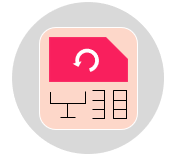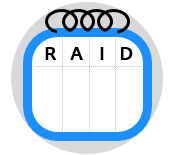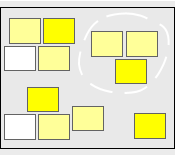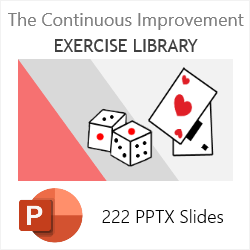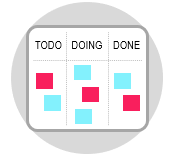
Also Known as Activity Board, Task Board, and Agile Board.
Related Items include Scrum Board, Production Control Board, Kanban Order Board, Workflow Board, and Scheduling Board.
A Kanban board is a simple tool that helps people and teams track their work and see progress at a glance. Every activity is shown as a card that moves across the board from left to right. As work moves forward, everyone can instantly know what is being worked on, what is waiting, and what has been finished. This visual way of managing work helps teams stay organized and spot delays and problems quickly.
The Kanban board is inspired by the same principles as the original Kanban system developed by Toyota to improve manufacturing efficiency. Modern Kanban boards apply the same Lean and flow-based principles to all kinds of work beyond the factory floor. Although the setting has changed, the main goal remains the same: to keep work moving smoothly and efficiently.

A Kanban board can be used in almost any situation where work needs to be tracked, at work, school, or home. For example, businesses use it in IT, marketing, HR, and operations to visualize their workflows. In project management, a Kanban board helps manage the flow of project activities and track how a project is progressing. It provides project managers with a simple and visual way to stay organized and maintain a disciplined workflow from start to finish.
In a restaurant for example, each customer order can be shown on a card that moves from “Order Taken” to “Cooking”, “Ready to Serve”, and finally “Served”. This helps everyone in the kitchen see what is being worked on and what comes next. Similarly, an IT support team can use the board to track service requests from “New Request” to “Resolved.” Whatever the job is, breaking work into steps and showing progress visually helps teams stay organized, monitor progress, and manage their workload better.
Types of Kanban Boards
There are two main types of Kanban boards: manual and digital. A manual Kanban board can be made with just a whiteboard, sticky notes, and markers. Each sticky note represents an activity that moves through the various columns. A digital Kanban board, on the other hand, uses specialized software or online applications to display and manage virtual cards. These tools let teams work together remotely, easily share updates, and even track performance automatically.

Different card colors can be used on Kanban boards to indicate levels of urgency or priority, or to distinguish types of work or activity, whether the boards are manual or digital.
The Board and Cards
Each Kanban card represents a specific activity and can display important information such as the activity title, the person responsible, its priority, the completion deadline, and any other relevant details.
To make tracking easier, each card can also include a checklist that breaks the activity into smaller steps. These checklists help team members track progress within a single activity and ensure that no detail is overlooked before moving the card to the next phase.

A Kanban board typically has three main columns: “To Do”, “Doing”, and “Done.” These phases represent how work typically moves from start to completion. Some boards include more specific columns, and the wording and layout can be adjusted to match the exact process. The goal is to make the board accurately represent the real flow of work.
Some versions of Kanban boards may divide the “Doing” column into smaller steps for more detailed tracking. Some Kanban boards include a buffer column for activities waiting between steps, like between “Order” and “Review”. Some boards also use horizontal lanes to represent different teams, priorities, or types of work.

A key principle of Kanban is limiting work in progress (WIP) to encourage teams to finish what they’ve started before taking on new activities.
Teams can set limits, such as allowing only four activities in progress at a time, to avoid overload. By doing so, work flows more smoothly across the board.

There are no strict rules for designing a Kanban board. It should be tailored to fit the team’s dynamics and work environment. Teams can customize their boards with features that suit their processes, such as a “Discarded” area, a “Waiting” area, a column for “Today’s” activities, and so on.

Working Together
A Kanban team consists of all individuals who take part in completing the work items represented on the board. Each member manages their activities, updates their cards, and pulls new work when ready. There are no strict roles, teams work together and support each other to keep the flow moving.

A Kanban board owner can be assigned to ensure the board is regularly updated and used effectively. The goal is collaboration and shared responsibility, not micromanagement.
A good practice is to hold regular daily Kanban meetings where the team reviews the board together. These meetings can take the form of stand-ups and usually last only a few minutes. Each member briefly shares what they’ve completed, what they’re currently working on, and any obstacles blocking progress.
Some teams also schedule weekly reviews to analyze workflow, review key metrics, and identify improvement opportunities. These meetings help keep everyone aligned, focused, and committed to ongoing improvement.
Wrapping Up
A Kanban board is more than just a visual tool, it’s a simple and powerful way to organize work, improve teamwork, and boost efficiency. Whether you are managing a restaurant, a school project, or a software team, the same principles apply: visualize your work, limit what’s in progress, and improve continuously.
Kanban helps people focus on starting, finishing, and staying connected to the bigger picture. It turns chaos into clarity and enables teams to achieve consistent progress every day.
References
Rob, M. Crown Holdings. Process Improvement Program.
A Guide to the Business Analysis Body of Knowledge. International Institute of Business Analysis (IIBA).
Other Formats
Slides
Poster
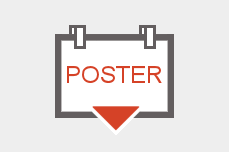
Infographic

Related Articles
Related Templates

